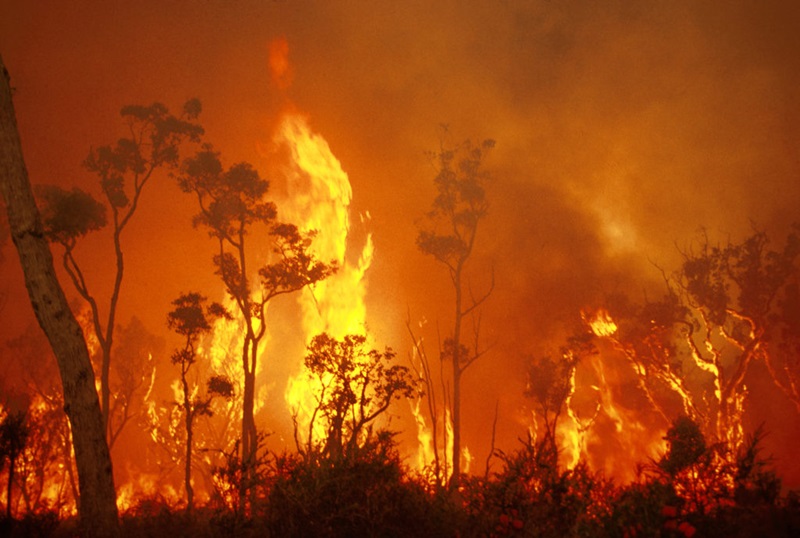Crucial Tips for Bushfire Management to Guarantee Fire Defense

Recognizing Bushfire Threat Degrees
Comprehending the varying degrees of bushfire danger is crucial for efficient preparation and preparation in mitigating possible dangers to lives and homes. Bushfire threat levels are usually categorized based upon aspects such as weather conditions, gas accessibility, topography, and historic fire habits. By comprehending these risk areas, individuals and degrees can proactively execute approaches to lower susceptability and enhance strength in the face of prospective bushfire events.
The initial level of bushfire danger is reduced threat, where the possibility of a bushfire taking place and creating substantial damage is minimal. High-risk degrees represent a significant danger, with problems conducive to fast fire spread and severe fire behavior.
Comprehending these bushfire threat degrees allows stakeholders to customize their preparedness and feedback actions appropriately, guaranteeing a proactive and efficient strategy to bushfire management.
Developing a Defensible Area
Reliable bushfire management starts with developing a defensible space around homes to boost protection versus possible fire dangers. A defensible space is a buffer area that creates an obstacle in between a structure and the surrounding combustible vegetation. This area serves as an essential line of defense, providing firefighters a risk-free location to run and aiding to decrease the danger of a fire spreading to the home.
When creating a defensible space, it is vital to consider the format of the residential property and the surrounding landscape. Cleaning plants, especially very combustible plants, within a certain distance of the property can assist stop the rapid spread of fires. In addition, keeping a well-irrigated zone around the residential property can additionally enhance its defensibility.
Regular maintenance of the defensible space is important to ensure its efficiency. This includes trimming overhanging branches, removing dead plants, and keeping the location complimentary of debris. By spending effort and time right into creating and preserving a defensible space, building proprietors can considerably improve their opportunities of shielding their homes and properties during a bushfire.
Carrying Out Fire-Resistant Landscape Design
When developing landscapes to mitigate the danger of bushfires, integrating fire-resistant aspects is important for boosting residential property security and reducing fire threats. Applying fireproof landscape design involves tactical planning to create a defensible area around structures. Begin by choosing fireproof plant species that are less likely to stir up and create reduced degrees of combustible materials. Select plants with high wetness web content, reduced oil web content, and marginal dead plant life to minimize the threat of fire spread. Furthermore, keep sufficient spacing between plants and keep them appropriately pruned to stop fire from quickly leaping between vegetation.

Creating an Emergency Discharge Strategy
Establishing a thorough emergency situation discharge strategy is crucial for making certain the safety and wellness of individuals during potential bushfire cases (BAL Report). An effective emptying strategy need to lay out clear procedures to follow in case of a bushfire threat, consisting of assigned emptying routes, assembly factors, and communication protocols
To begin developing an emergency situation discharge strategy, it is crucial to examine the certain dangers and susceptabilities of your place. Recognize numerous evacuation paths that bring about risk-free areas far from the fire, thinking about elements such as terrain, roadway accessibility, and potential threats. Develop interaction channels to sharp locals of an upcoming discharge, making use of methods such as sirens, message informs, or door-to-door notices.
Frequently review and exercise the emptying plan with all homeowners or neighborhood members to ensure everybody recognizes their roles and obligations. Conduct drills to check the effectiveness of the strategy and make any kind of required adjustments. By having a well-prepared emptying strategy in position, you can improve the opportunities of a secure and organized emptying throughout a bushfire emergency.
Maintaining Fire Security Equipment
After developing an extensive emergency evacuation prepare for bushfire cases, it is important to focus on the routine upkeep of fire safety and security tools to make sure optimal functionality and preparedness. Normal maintenance of fire safety tools such as fire extinguishers, smoke alarm, emergency alarm, and automatic sprinkler is vital in protecting lives and building throughout a bushfire. When needed., conducting regular examinations, testing, and servicing of these gadgets by qualified specialists is necessary to Look At This assure they are in functioning order.
Fire extinguishers need to be checked routinely for pressure levels, visible damage, and appropriate functionality. By vigilantly preserving fire security devices, people can enhance their readiness and feedback capacities in the event of a bushfire.
Conclusion
Finally, efficient bushfire administration involves understanding danger degrees, producing defensible spaces, applying fire-resistant landscape design, creating emptying plans, and maintaining fire security tools. By complying with these essential tips, individuals can make certain far better fire security and security for their homes and areas. It is necessary to focus on aggressive steps to minimize the risks associated with bushfires and to be planned for emergency situations.
By recognizing the subtleties of bushfire danger degrees, creating defensible spaces, carrying out fire-resistant landscape design, creating thorough discharge plans, and ensuring the upkeep of fire safety tools, people and areas can substantially bolster their resilience against the ravages of wildfires - BAL Assessment. These pointers are not just vital for safeguarding against immediate fire threats yet additionally for promoting long-lasting fire defense techniques that can make a significant difference in the face of intensifying bushfire dangers
Risky degrees symbolize a considerable risk, with problems conducive to quick fire spread and severe fire behavior. Regular maintenance of fire safety devices such as fire extinguishers, smoke detectors, fire alarms, and sprinkler systems is vital in protecting lives and residential property throughout a bushfire.In verdict, efficient bushfire management entails comprehending threat levels, producing defensible areas, carrying out fireproof landscaping, developing evacuation plans, and preserving fire safety equipment.
Comments on “Revealing the Risks: Why Every Property Owner Needs a Bushfire Risk Assessment”